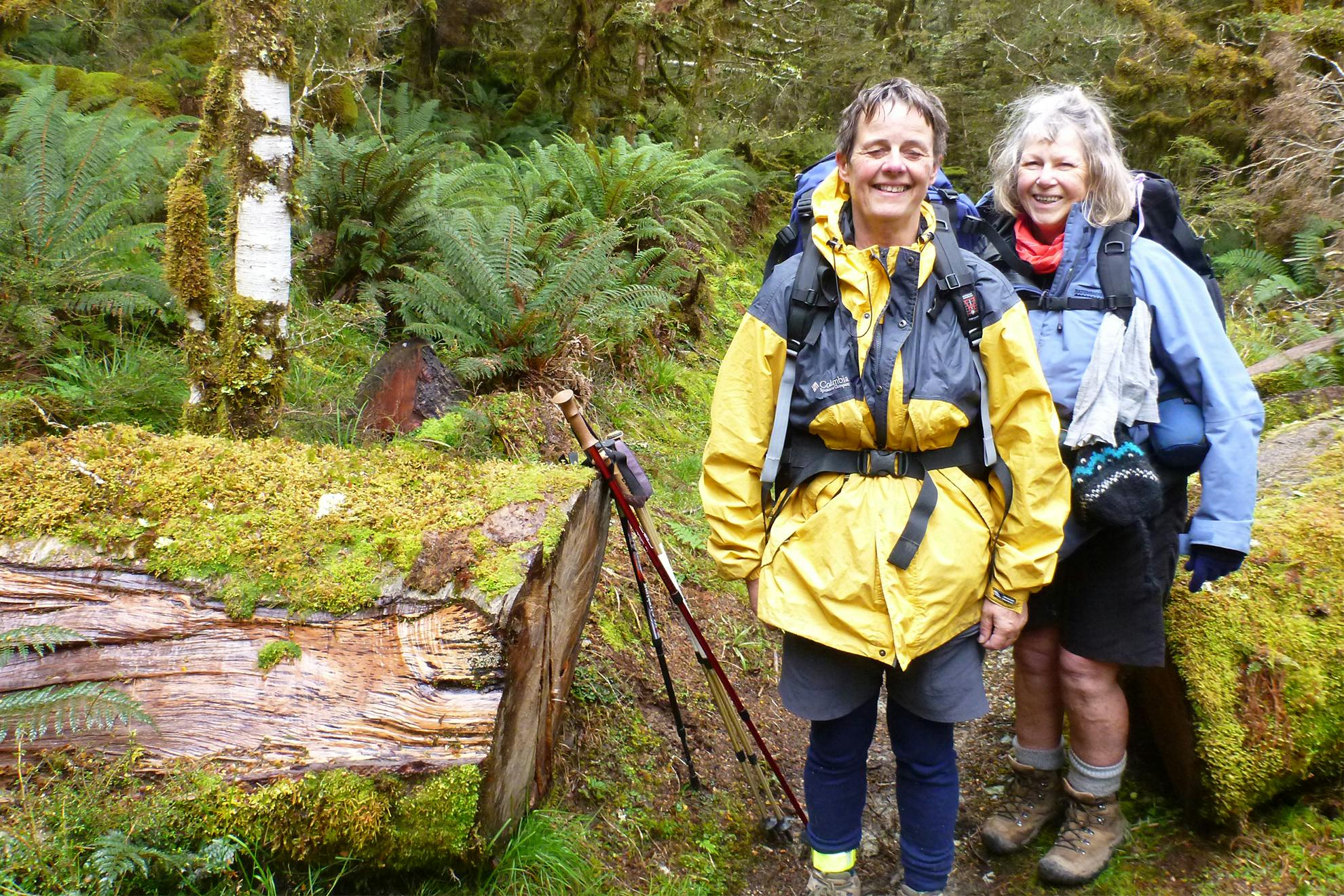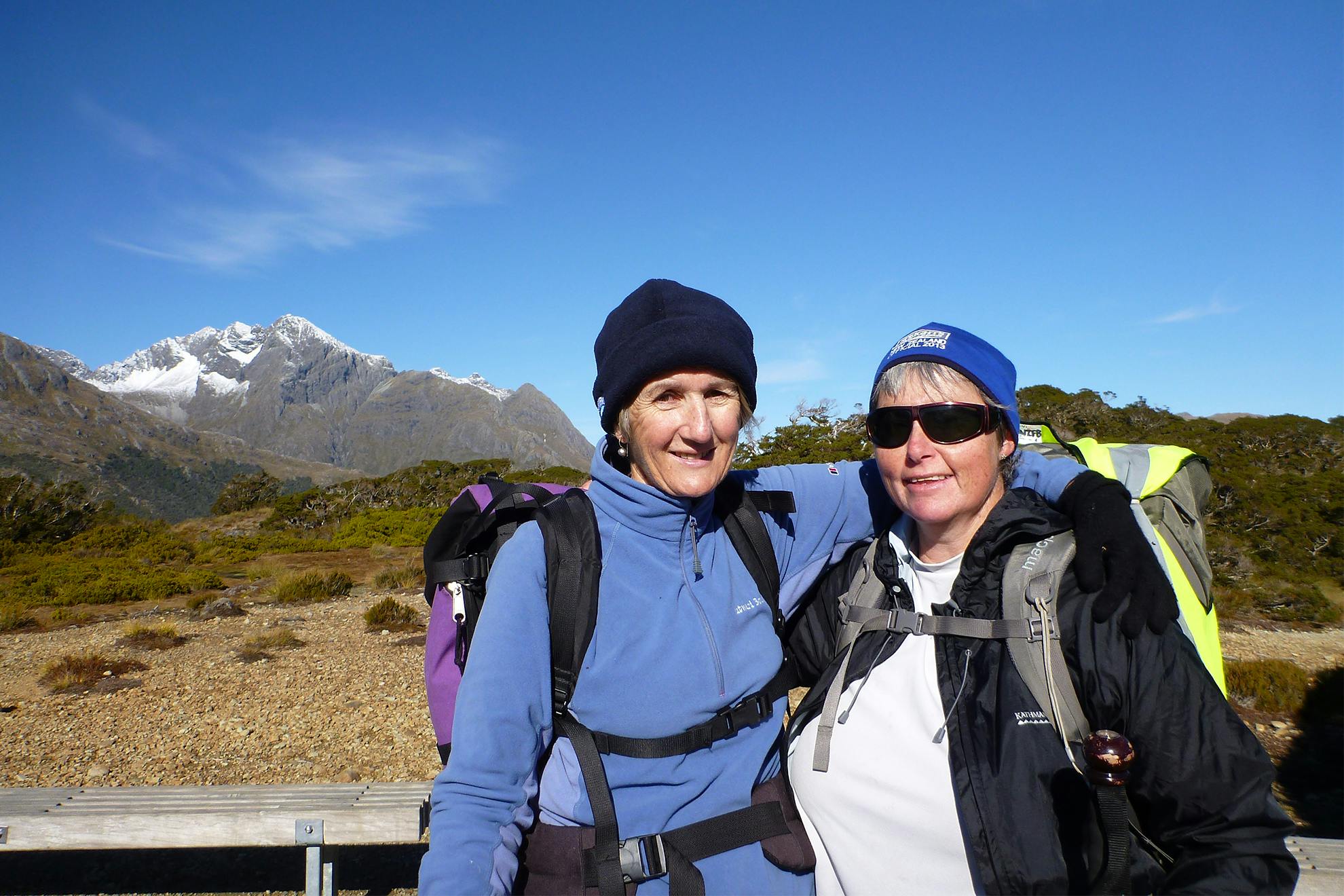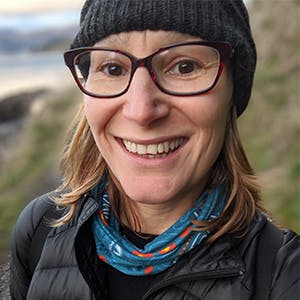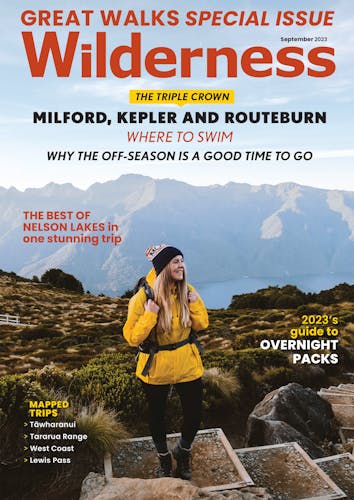The Great Walks are an experience everyone can enjoy, as these sight-impaired trampers discovered.
Petronella Spicer from Christchurch is totally blind. She’s no stranger to tramping and the Great Walks, having ticked off Lake Waikaremoana, the Abel Tasman, part of the Kepler and part of the Milford.
“The Blind Foundation (now Blind Low Vision New Zealand) would organise a big tramp every two years with lots of support,” she says. “People with low vision need a guide to be able to experience these walks.”
The level of support needed depends on a person’s vision, says Spicer. “Those who are totally blind, like me, generally hold a hiking pole between them and the guide, one at each end, and follow the guide. We use a second pole to steady ourselves. The guide describes hazards on the track as we walk.”
This method keeps the trampers a comfortable distance apart but close enough to be responsive and give information depending on how the walking pole is angled.
Those with low vision can often follow a person wearing something bright, such as a fluoro vest or a strip on their backpack. Sue Emirali, a tramper from the Kāpiti Coast, has retinitis pigmentosa. “My sight isn’t great, but I can see a little,” she says. “I have tunnel vision with no light or dark perception. If the sun comes out it’s just bright light, and in the shadows it’s black, like nighttime. In the trees I have virtually no sight at all. People with my type of sight can have one guide to two or three walkers.”
Guide Marina Hanger from Canterbury has accompanied many blind and low-vision trampers, including on Great Walks. “Everyone with low vision has different needs depending on their vision loss,” she says. “Because Great Walk tracks are well maintained with good surfaces, they’re completely manageable with the right sort of guidance.”
Guides are often experienced trampers who’ve had sighted guide training. “It’s really important for a guide to work with the person they’re guiding to understand how their vision loss affects them,” says Hanger.
Spicer agrees. “It’s very specific to the individual. Once we’re together, it’s about working out what information is needed and keeping it simple and short. It requires a lot of concentration for us both. The guide is having to get the words out in time to describe what’s coming up, and I’m interpreting it.”
Sometimes there are mishaps, and both Spicer and Emirali have fallen at some point. “On the Kepler I swung out a little on one of the bridges, wasn’t lined up and ended up falling,” says Spicer. “Luckily I fell into moss, but it’s just one of those things. You can have the odd trip up, but so could a sighted person.”
Emirali fell down a bank once. “I didn’t see some pebbles and went flying. It didn’t put me off. These things happen.”
Guides do more than describe hazards. “I need somebody to point out sights, like the wildlife, so I can stop and focus my vision,” says Emirali. “On the Milford Track, I had a fabulous guide who helped me see whio. It was a magic moment. I’ve been so lucky, with my limited vision, to see some amazing sights.”

Spicer needs her guides to describe what’s around to build a picture of the environment. “We’ll stop to touch and sense the surroundings,” she says. “Without the visuals, I can hear waterfalls from a distance, and pick up on the noises in the bush.”
Hanger says it’s really important to include touch for the people she’s guiding. “We’ll spend quite a bit of time touching the mosses, tree trunks, or the leaves,” she says. “We talk about the vegetation and give people the opportunity to feel it.”
Guides also help with hut orientation. “It can take a while,” says Spicer. “The loos are usually a challenge because they’re often a mission to get to. I try to get a bed near the door so it’s easier to get in and out. People are very obliging and the camaraderie with other trampers is brilliant.”
Emirali agrees. “Trampers are neat people and really helpful. It’s great to meet people from all walks of life and different nationalities who have a common interest. The Great Walks are brilliant because there’s room for people of all abilities.”
Both Spicer and Emirali love being out in the bush. Spicer says: “If you’re a tramper, you know what it’s like. It’s exactly the same for me, just without the visuals. I love being outdoors in nature with the noises and the smells. Life outside the track goes away and it’s like being in another world.”
There’s something indefinable about it, says Emirali. “I listen to my other senses more. The birdsong and wonderful smells; the perfume of the bush.”








